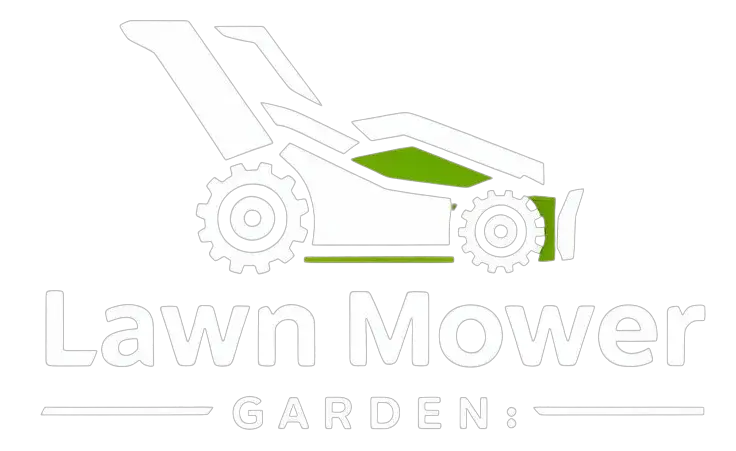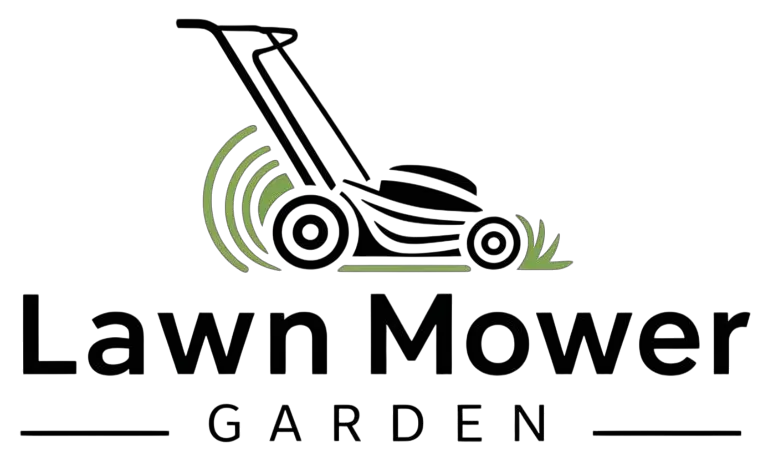
Lawn mowing is a routine chore for many of us, an opportunity to enjoy the outdoors, soak up some sun, and keep our gardens looking pristine. However, it’s easy to overlook the potential hazards associated with this seemingly simple task. Accidents can happen, and when they do, knowing how to respond quickly and effectively can make all the difference.
In this comprehensive guide, we’ll dive into the most common injuries caused by lawn mowers and walk you through the essential first aid measures you can take to ensure your safety and well-being. Whether you’re dealing with a minor cut or something more serious, this post will equip you with the knowledge and confidence to handle any situation.
Understanding Lawn Mower Injuries: A Common Issue
Before we get into the specifics of first aid, it’s important to understand the common injuries that can arise while mowing the lawn. Some of these injuries may seem minor, but others can be quite severe, depending on the circumstances.
Types of Injuries to Look Out For
- Cuts and Lacerations: The most common injury is a cut, which can occur if you’re not paying attention to your surroundings or if you inadvertently brush against the mower blades.
- Burns: Lawn mowers can get very hot, especially during prolonged use. Burns can occur if you come into contact with the engine or exhaust.
- Sprains and Strains: Improper posture or overexertion can lead to muscle strains or joint sprains, particularly in your back, arms, and legs.
- Eye Injuries: Flying debris like rocks, twigs, or grass can cause eye injuries if you aren’t wearing protective eyewear.
- Fractures: In rare cases, falls or accidents involving the mower can result in broken bones.
- Head Injuries: If you fall or get knocked over by a mower, head injuries can occur. These are particularly dangerous, and medical attention should be sought immediately.
These injuries can happen to anyone, from seasoned gardeners to weekend lawn enthusiasts. That’s why it’s essential to know how to handle these situations properly.
Essential First Aid Measures for Lawn Mowing Injuries
Now that we know what injuries to expect, let’s take a look at how to deal with them. Whether it’s a small cut or a more serious accident, following the right first aid steps can prevent further damage and ensure faster healing.
1. Cuts and Lacerations
Cuts are perhaps the most frequent injury when mowing the lawn. Whether caused by contact with the blades or by sharp objects on the ground, cuts need to be cleaned and treated immediately to prevent infection.
Step-by-Step First Aid for Cuts:
- Clean the Wound: Rinse the cut under clean water to remove dirt and debris. If the cut is large or deep, use a mild antiseptic solution to disinfect the wound.
- Stop the Bleeding: Apply gentle pressure to the wound with a clean cloth or gauze pad. Elevate the injured area if possible to reduce blood flow and encourage clotting.
- Bandage the Cut: Once bleeding stops, cover the wound with a sterile bandage. Make sure it’s snug, but not too tight, to avoid restricting blood flow.
- Seek Medical Help: If the cut is deep, doesn’t stop bleeding, or if you notice signs of infection (redness, swelling, or pus), consult a doctor. In some cases, stitches may be necessary.
Pro Tip: Always wear protective gloves when mowing the lawn to minimize the risk of cuts. Leather or heavy-duty gardening gloves offer the best protection.
2. Burns
Lawn mower burns can occur due to contact with the engine, muffler, or exhaust pipe. These areas get extremely hot, and even a brief touch can result in a painful burn.
Step-by-Step First Aid for Burns:
- Cool the Burn: Immediately run cool (not cold) water over the burn for at least 10-20 minutes to cool the area and reduce the severity of the injury. Avoid using ice, as it can damage the skin.
- Cover the Burn: After cooling the burn, cover it with a sterile, non-stick bandage. Avoid using cotton, as it can stick to the wound.
- Pain Relief: Over-the-counter pain relievers like ibuprofen or acetaminophen can help manage pain and inflammation.
- Seek Medical Attention: If the burn is severe (blistering, extensive redness, or pain), seek medical attention immediately.
Pro Tip: Avoid touching any part of the mower that is too hot, and always allow it to cool down before performing maintenance or storing it away.
3. Sprains and Strains
Lawn mowing can be physically demanding, especially if you’re mowing a large yard or using a push mower. Sprains and strains often occur from twisting, overexertion, or lifting improperly.
Step-by-Step First Aid for Sprains and Strains:
- Rest: Stop mowing immediately and rest the injured area.
- Ice the Injury: Apply an ice pack wrapped in a cloth to the affected area for 15-20 minutes every hour to reduce swelling.
- Compression: Use an elastic bandage to apply gentle compression to the injury site, but avoid wrapping it too tightly.
- Elevation: Elevate the injured limb to reduce swelling.
- Seek Medical Attention: If pain persists or if you’re unable to move the injured part of your body, see a doctor.
Pro Tip: Stretch before mowing to warm up your muscles and reduce the risk of strains and sprains.
4. Eye Injuries
Eye injuries from lawn mowing are typically caused by flying debris, such as small rocks, dirt, or pieces of grass. To protect your eyes, always wear safety goggles, but if an injury does occur, follow these steps.
Step-by-Step First Aid for Eye Injuries:
- Flush the Eye: Rinse your eye with clean water immediately to remove any debris or chemicals.
- Avoid Rubbing: Don’t rub your eye, as this can cause further irritation or damage.
- Cover and Protect: If debris is lodged in the eye, don’t attempt to remove it yourself. Cover the eye with a clean bandage or cloth and seek medical help immediately.
- Seek Professional Help: For any significant injury, such as cuts or deep scratches, see an eye specialist right away.
Pro Tip: Invest in a pair of durable, anti-fog safety goggles when mowing to protect your eyes from flying debris.
5. Fractures and Head Injuries
In rare cases, lawn mowing can lead to serious injuries such as broken bones or head trauma, especially if you trip, fall, or are hit by the mower.
Step-by-Step First Aid for Fractures and Head Injuries:
- For Fractures: Immobilize the affected limb by applying a splint. Keep the area elevated if possible, and avoid moving the injured person unnecessarily. Seek emergency medical care.
- For Head Injuries: If the injured person is unconscious, has a concussion, or exhibits any signs of severe head trauma (confusion, dizziness, vomiting), call emergency services immediately. Do not attempt to move them unless absolutely necessary.
Pro Tip: Always check for obstructions in your path before mowing to prevent tripping, and mow at a comfortable pace to avoid fatigue and accidents.
Injury Comparison Table
Here’s a quick comparison table summarizing the first aid measures for common lawn mowing injuries:
| Injury | First Aid Steps | When to Seek Medical Help |
|---|---|---|
| Cuts and Lacerations | Clean the wound, stop bleeding, and apply a sterile bandage. | If the cut is deep or doesn’t stop bleeding, or if signs of infection occur. |
| Burns | Cool the burn with water, cover with a non-stick bandage, and take pain relief. | If the burn is severe (blistering, extensive redness) or doesn’t heal. |
| Sprains and Strains | Rest, ice the injury, apply compression, and elevate. | If pain persists or if movement is restricted. |
| Eye Injuries | Flush the eye with water and avoid rubbing. Cover the eye and seek professional help. | For deep cuts, scratches, or persistent pain in the eye. |
| Fractures and Head Injuries | Immobilize the limb or head, avoid movement, and seek immediate medical attention. | In all cases of head injuries, fractures, or if the person is unconscious. |
Frequently Asked Questions (FAQ)
1. What’s the best way to avoid lawn mower injuries?
To avoid injuries, always wear protective gear such as sturdy gloves, safety goggles, and steel-toed boots. Keep your mower in good working condition and be cautious of your surroundings while mowing.
2. How can I prevent burns from my lawn mower?
Avoid touching the engine, muffler, or exhaust pipe after using the mower. Wait for it to cool down before performing maintenance or storing it away.
3. Should I mow the lawn if I’m feeling tired or sore?
It’s better to wait until you’re feeling rested. Lawn mowing can be physically demanding, and fatigue increases the risk of accidents.
4. Can I treat a lawn mower injury at home, or should I go to the doctor?
For minor injuries, such as small cuts or sprains, you can treat them at home. However, for serious injuries, like deep cuts, fractures, or head trauma, you should seek immediate medical attention.
Conclusion: Stay Safe and Keep Mowing
Lawn mowing is a task that should be both enjoyable and safe, but as with any outdoor activity, accidents can happen. By understanding common injuries and knowing how to treat them, you’ll be better equipped to handle any mishap that comes your way. Remember, prevention is key—take precautions like wearing protective gear and staying alert while mowing. But, if an injury does occur, knowing how to respond promptly with the right first aid measures can make all the difference in your recovery.
Now that you’re equipped with essential first aid knowledge, go ahead and mow with confidence! Just remember: safety first. Happy mowing!



